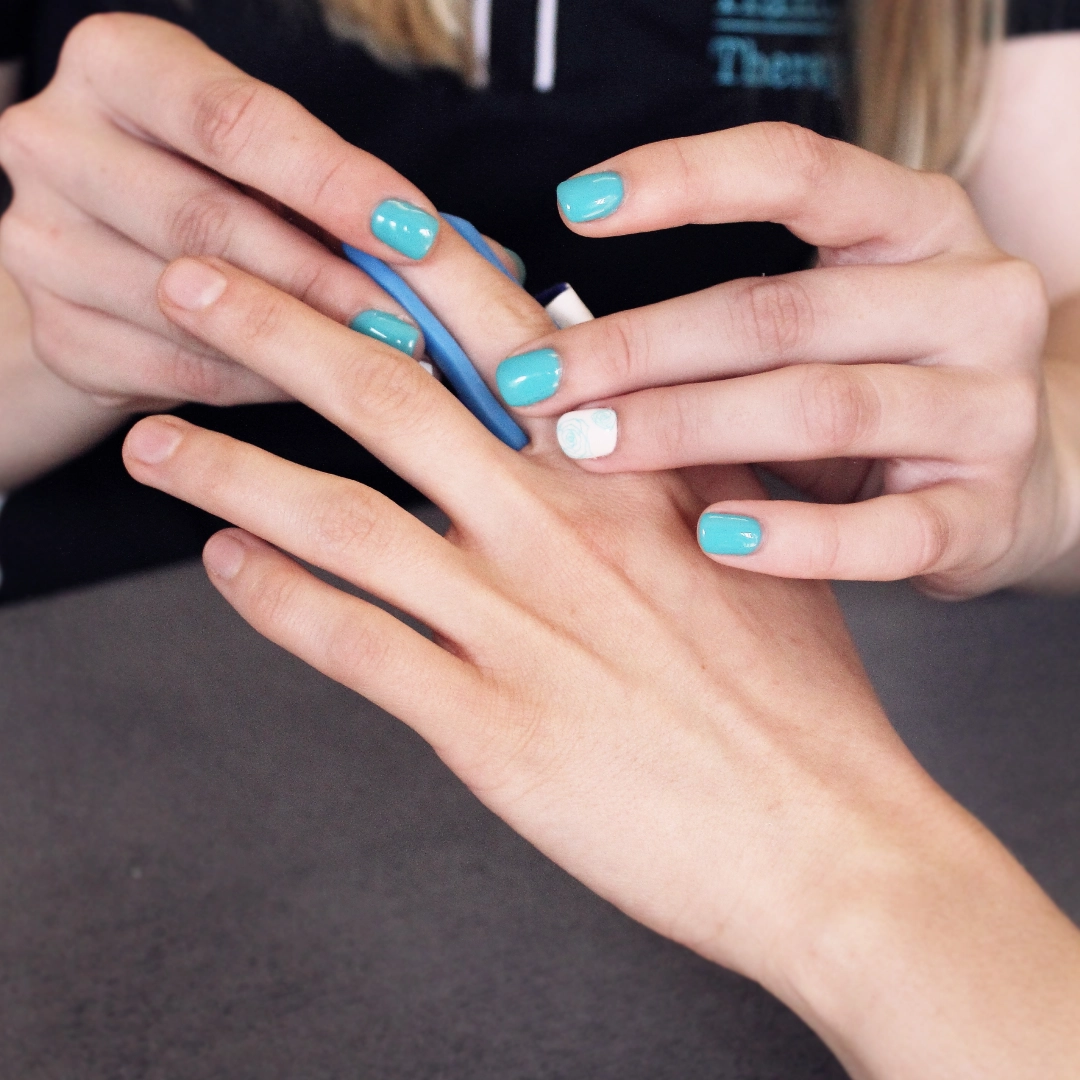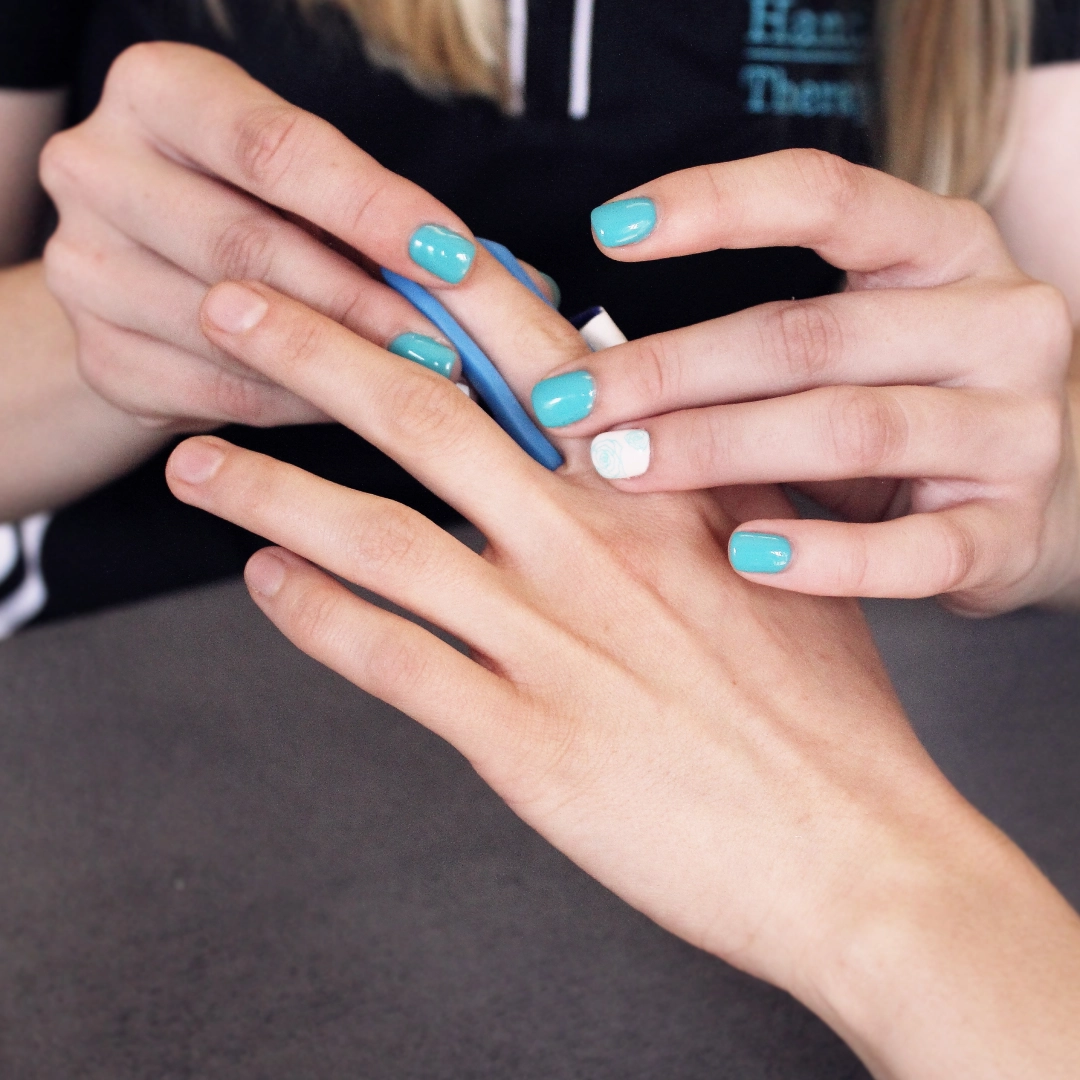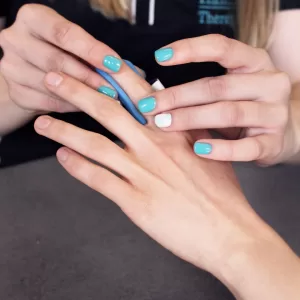This involves the crack or splinter of any of the three bones that make up your finger. You may not always be sure if your finger is broken, but there’s some clear signs and self tests that you can try to test it. Yes it’s painful if you fracture your finger, but usually you’ll still be able to move it. Pain is rarely a diagnosing factor. Don’t be fooled if you can still move the finger – this does not mean the finger is not broken. Fractures come in all shapes and sizes, from burst fractures like slamming your finger in a door to smaller cracks in the tip of your finger causes severe pain, but more importantly long term complications if not treated correctly.
A Broken finger is very commonly left untreated, but it causes a number of problems in the future because of stiffness and the inability to use your hand normally. It is very important that a broken finger heals in the correct position to prevent deformity and early aging of the joints in your hand. Avoid being anxious to shaking someone’s hand, just get it fixed & you’ve got nothing to worry about.

What is your finger made up of?
The bones in your fingers are called phalanges. Each finger has three phalanges. The bones in your fingers starting at the tips are called the Distal Phalanx, then the Middle Phalanx, and your Proximal phalanx that connect to your knuckles. Between each of these bones there are joints. A broken, or fractured finger occurs when one or more of these bones break:
DIPJ – Distal Interphalangeal Joint between the Middle Phalanx and Distal Phalanx
PIPJ – Proximal Interphalangeal Joint between the Proximal Phalanx and Middle Phalanx
MCPJ – Metacarpophalangeal Joint between the Metacarpal and Proximal Phalanx (Also known as the knuckles)
These joints provide a hinge point for your finger bones to pivot and move on. When a fracture extends into the joint space, it scrapes away cartilage and heals much slower. Surgeons rather opt to stabilize the fracture to safe the joint from further damage. If this is not done, you might lose all forms of movement and the joint ceases up and become permanently stiff.
Periosteum. This is the membrane covering the bone’s outside surface that supplies nutrients to the bone. It plays a vital role in the healing of a fracture to restore the normal form of your finger bones. In fractures this delivery of vital nutrients is disrupted which causes broken bone to heal much slower.
Diagnosis of a broken finger
We are experienced in testing the different types of problems that can cause your finger pain. Our specialists use a variety of joint mobilizations to determine the extent of the damage, not only the bone, but the surrounding soft tissue like ligaments, tendons, muscles and joints. We mainly test the two components of your finger bones, the first involves movement testing and we develop a certain dexterity to identify a fracture. The second involves testing bone stability and integrity.
If your tests prove that we suspect that you may have a finger fracture, we must do further investigation, the first on the list will be X-rays.
Why is my finger pain not going away?
A fracture of your finger bone normally heal between 6-9 weeks. If however the bone is not protected it can grow back in the wrong place or change the shape of your finger. This leads to a deformity with continuous pain, discomfort, lack of movement and grip strength. Ignoring a broken finger alters movement patterns and leaves you in pain, because the stability that the bone provides is absent.
Although the bone can grow back by itself, it is important to protect the bone using a splint or cast to preserve the correct position. We talk about a malunion when the bone grows back but not in its original shape. You may be left with a disfigured hand.
Sometimes the bone does not join (due to many factors), this is called a nonunion. In these cases surgery will most likely be required to connect the ends of the bone to ensure that healing happens.
If your pain remains the same, or progressively gets worse and more frequent you may be at higher risk of developing complications. Rather get an expert’s guidance and consult a professional.

Don’t
Must Do
Makes it worse
A big problem we see with a broken finger these days:
Malunion
This is when the bone grows back in the wrong position. This causes movement problems because the bone’s position is out of its normal alignment. Splinting the finger in the wrong position leaves your finger deformed and further reduces the power and mobility of your finger.
Remember that pressure from the swelling around the finger fracture keeps the fracture site stable. As the swelling gradually subsides, the broken segments are more vulnerable to move apart. This delays healing or even causes further separation of the fractured pieces.
Non-union
This is when the bone doesn’t join together at all, and the separate pieces grind and scratch against each other every time you move your finger. You can just imagine the world of problems that you can get into if this happens.
Generic braces can separate the fractured segments even more. They can even put undue pressure onto the fracture site, causing more problems than solutions. So be careful. Our braces offer direction specific and angular reinforcement to reduce the risk of complications.
Returning to sport too early may risk putting the finger bone under stress increasing the likelihood to impede bone healing.
Hand therapy treatment for a finger fracture
Our experts are the best to test and diagnose your finger fracture. We even assess the integrity of all the surrounding tissue like muscles, tendons, pulleys, volar plate and ligaments. Our practitioners use the latest technology and techniques that’s proven to work. These finger fracture treatments include splinting, compression garments, laser, cupping, and furthermore to monitor your progress and recovery. Making sure you’re safe.
Splinting – A custom splint made and tailored for your finger, to allow optimal healing and ensure the bone re-attaches in the correct position. A splint or brace is a compulsory treatment for a broken finger.
Passive Exercises – Small oscillating mobilizations to maintain movement of all the non-affected joints and regain articular mobility.
Active exercises – Isometric, Eccentric and concentric contractions in a controlled loading program to regain and strengthen the muscles. Breaking down the fear of movement and avoid stiffness from a broken finger.
Tendon gliding techniques – Recover the slide of the tendon along it’s axis through it’s sheath. This treatment is crucial after a broken finger to restore grip strength.
Callus tissue formation – to guide and prevent any abnormal bone formation. Follow up X-rays is ideal when you have completed your finger fracture treatment program.
Sensory retraining – Many broken fingers involve a component of nerve re-training and pain modulation to recondition the nerve endings. This works on the sensory cortex pain perception model.
Phases of Rehabilitation & Treatment of a broken finger
Healing & Recovery Time for a broken finger
The expected healing time for your fractured finger ranges between 9-12 weeks but other factors can limit your recovery.
Your finger tips are the most distal part of the circulation line and can be effected by compromised blood supply or injury to the joints in your finger. Recovery time can easily double if not correctly treated and monitored.


Surgery of a broken finger
If you ignore your finger fracture and you end up with a non-union or malunion, the chances are high you’ll need surgical treatment, even a misdiagnosed finger fracture usually results in surgical repair.
Pins, screws, and wires are used in surgical correction of broken fingers. If your fracture is unstable or displaced, your doctor will opt to perform surgery that stabilizes the fracture
This is the same for:
- multiple fractures
- loose bone fragments
- a fracture extending into the joint space
- damage to the ligaments or tendons
- unstable, displaced, or open fractures
- an impacted fracture
What else could the pain be?
- Finger dislocation
- Trigger finger
- Finger pain
- Mallet finger
- Tendinitis in the finger
- Dupuytren’s contracture

